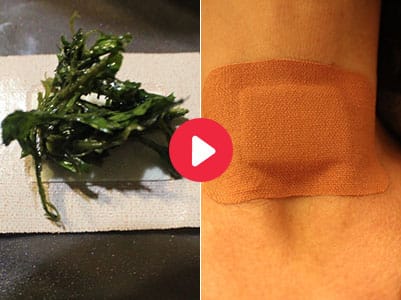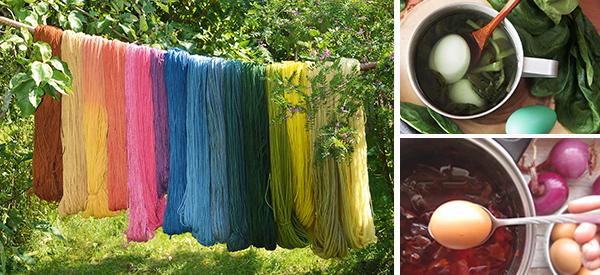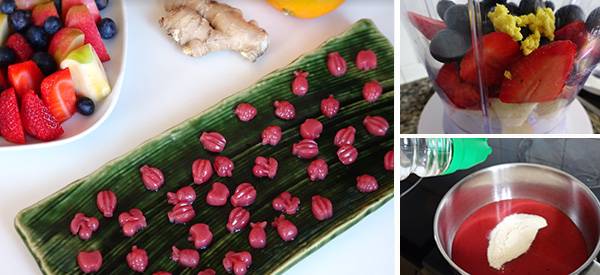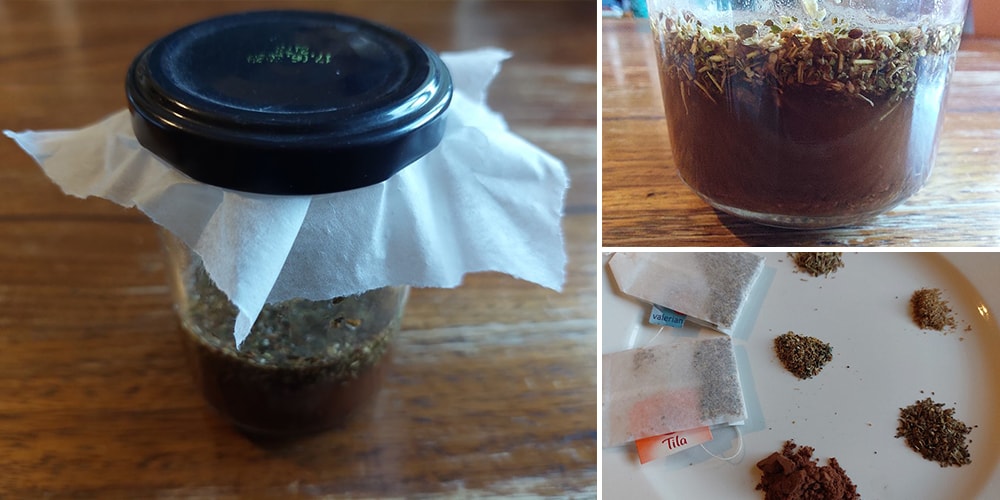
The Native American Remedy For Mosquito Bites
Mosquitoes and other insects have been a problem since ancient times. Before the salves and topical creams, our ancestors relieved insect stings with common backyard plants.
A poultice, or fomentation of crushed fresh plant leaves, may offer relief from pain and reduce the swelling. The most common herbs are plantain, basil, and lemon balm. They also utilize honey and clay to neutralize the stinger and prevent infection.
Modern medicine has incorporated many of these herbs into topical products using plant extracts and essential oils.
Native Remedy for Insect Bites
Bug bites can cause a range of symptoms, with some more severe than others, depending on the insect that bites and its level of severity.
When an insect bites, it injects an anticoagulant into the skin, so it can feed freely, without the blood clotting. The body recognizes insect saliva as a foreign substance, forcing the immune system to release histamine, resulting in itching and inflammation.
Some bug bites are usually manageable, lasting for a couple of hours to a few days. However, some people may have a mosquito bite allergy, also known as Skeeter Syndrome. Skeeter syndrome is rare, but it can cause exaggerated symptoms of mosquito bites in affected individuals.
Additionally, mosquitoes can harbor diseases such as dengue fever, malaria, the Zika virus, or West Nile virus, among others.
Bites from venomous insects, such as scorpions, certain spiders, yellowjackets, hornets, bees, and wasps, can be dangerous and may be life-threatening.
Plantain
Broadleaf plantain (Plantago major) is a common garden weed, but it is also very effective in treating skin diseases, wounds, and insect bites. Applying freshly crushed plantain leaves to the bite site may help relieve pain and soothe itching. Plantain has a range of bioactive compounds and organic acids that reduce pain and inflammation and promote faster wound healing.
Aloe Vera
Aloe vera (Aloe barbadensis) contains salicylic acid that may relieve local pain and prevent inflammation in insect bites and other skin problems. Placing aloe in the refrigerator before applying it to insect or mosquito bites enhances its soothing effect.
While aloe vera is generally safe, it may cause an allergic reaction in people with latex sensitivity, so test it on a portion of the skin before using.
Chamomile
Using cold chamomile tea bags on the affected site may alleviate itchiness and pain. Chamomile (Matricaria chamomilla), particularly its flowers, possesses strong anti-inflammatory properties due to its beneficial compounds. Another method for extracting these compounds is to boil and steep chamomile buds in water.
But what if you could have chamomile growing right outside your door, ready whenever you need it?
Imagine never running to the store for relief again. Just stepping into your backyard and harvesting fresh, potent chamomile flowers that are far more effective than anything you’ll find dried on a shelf.
What would it feel like to know you have nature’s most trusted anti-inflammatory remedy growing at your fingertips, 24/7?
Discover how to grow your own medicinal chamomile garden here.
Basil
Basil (Ocimum basilicum) is widely available worldwide, making it one of the easily sourced backyard plants for bug bites and stings. A basil leaf poultice or the freshly squeezed juice from its roots may help alleviate symptoms of an insect bite.
Garlic
Garlic (Allium sativum) is a highly antimicrobial spice that may stop infections in puncture wounds and insect stings. Freshly squeezed garlic juice diluted in water may soothe the itching on the bite area when applied topically.
Jewelweed
Jewelweed (Impatiens capensis) is a native herbal antidote for insect bites, stings, and poison ivy rash. A freshly crushed stem or leaves of jewelweed rapidly act on the bite site a few minutes after application. Jewelweed can be prepared as a spray or tincture to serve as a handy first aid remedy for various types of insect stings.
Yarrow
Yarrow (Achillea millefolium) has been called “nature’s first aid” since ancient times. When applied to insect bites or stings, its compounds immediately go to work calming inflammation, reducing swelling, and speeding up skin repair. Traditional healers used it to stop bleeding and prevent infection, but modern research confirms its strong anti-inflammatory and antimicrobial effects.
If you don’t have fresh yarrow nearby, you can keep a small bottle of this Yarrow Tincture on hand. Just a few drops diluted in water make a quick wash for bites, or you can apply it directly for fast relief. It’s portable, potent, and always ready when the mosquitoes (or worse) strike.
Red Alder
Red alder (Alnus rubra) is a traditional Native American remedy for insect bites, poison oak, and skin irritation from other sources. Drinking a strong infusion of red alder bark or applying it directly to the affected area may help reduce skin irritation. The juice from its green cones is also effective in soothing insect bites. Anecdotal evidence claims its ability to draw out stingers and venoms from the bite site.
Honey
Honey is an effective antidote to various bug bites, including bee stings and spider bites. Honey may soothe skin irritation at the bite site, reduce swelling, and prevent infection. It also promotes faster healing through its ability to regenerate skin cells.
However, honey may also attract other insects when applied to the skin, so it may help to cover it with a bandage.
Fats and Oils
Indigenous people used to repel and treat insect bites with animal fats, such as alligator, bear, or beef tallow. A study on rancid fats suggests that they may have a short-lived insect repellent ability, but their efficacy in treating insect bites is not yet established.
Among the fats and vegetable oils, coconut oil may be the most effective in both insect repellent and insect bite treatment. Coconut oil has anti-inflammatory, antimicrobial, and emollient properties, which promote faster healing.
Clay or Mud
Many indigenous cultures rely on nature to address their health concerns, including the use of clay to alleviate skin irritation. A clay poultice has a cooling sensation that can relieve the itching and swelling. Its minerals and negative ions are believed to draw out toxins from the skin.
Bentonite clay, a type of volcanic ash, is still a popular modern home remedy for skin irritations, including those associated with insect bites.
Clay poultices work wonders, but are you making them correctly? Are you placing them on the exact spots that maximize healing?
What if I told you there’s a specific technique that can turn a simple clay remedy into something so powerful it could literally save your life in an emergency, just like it did for Nicole Apelian when she was stranded in the wilderness for 57 days?
Watch how to make life-saving herbal poultices here
Plantain Infusion for Insect Bites
Plantain leaf is one of the most popular weeds you can trust for insect stings when you are in the wild. You may find them growing in lawns, yards, and along roadsides, often overlooked until they are needed.
To treat insect stings, pluck a plantain leaf and warm it over a fire. Lightly crush the leaf, coat it with coconut oil, and apply it over the bite.
If you can’t forage plantain in your locality, you can find its dried form in many online herbal stores. You can use it to prepare an insect bite-relief salve for a handy remedy anytime.
Plantain salve is made from plantain infusion and beeswax.
Plantain infusion is prepared either cold or hot, depending on your preference. Cold infusion, also known as the slow method, involves submerging the leaves in oil and allowing them to infuse for at least 4 weeks.
Hot infusions use heat and are ready in about 30 minutes.
For this recipe, we will use the hot infusion method. The ratio of herbs to oil is 1:2 parts; feel free to use oil of your choice, such as olive, coconut, sweet almond, or jojoba. For this salve, I used equal parts of olive and coconut oil for a shelf-stable product.
Millions of people step on this “worthless weed” every single day without realizing they’re crushing nature’s most versatile first-aid kit. But if you see plantain growing anywhere – your driveway, sidewalk cracks, vacant lots – stop and pick it up. Dry it, store it, treasure it. Because this humble plant can stop bleeding instantly, heal infected wounds, soothe respiratory problems, calm digestive ulcers, and even help with broken bones.
Here’s what will shock you: You have no idea how many hundreds of plants around your house are actually the basis of the most common pills doctors prescribe today. Aspirin? Comes from willow bark. Digitalis for heart problems? Foxglove plant. Morphine? Poppy plants. But here’s the difference: when you go straight to the plants instead of the processed pills, you avoid the dangerous side effects and get relief for pennies on the dollar.
You need a plant identification guide that shows you exactly which “weeds” in your backyard are actually powerful medicines. The guide that’s already helped thousands of people transform their health naturally.
Get the only field guide with 800+ medicinal plants growing around your house
Plantain Insect Sting Salve
Ingredients
- ½ cup plantain leaves
- ½ cup olive oil
- ½ cup coconut oil
- ½ cup plantain oil infusion
- ½ to 1 tbsp beeswax
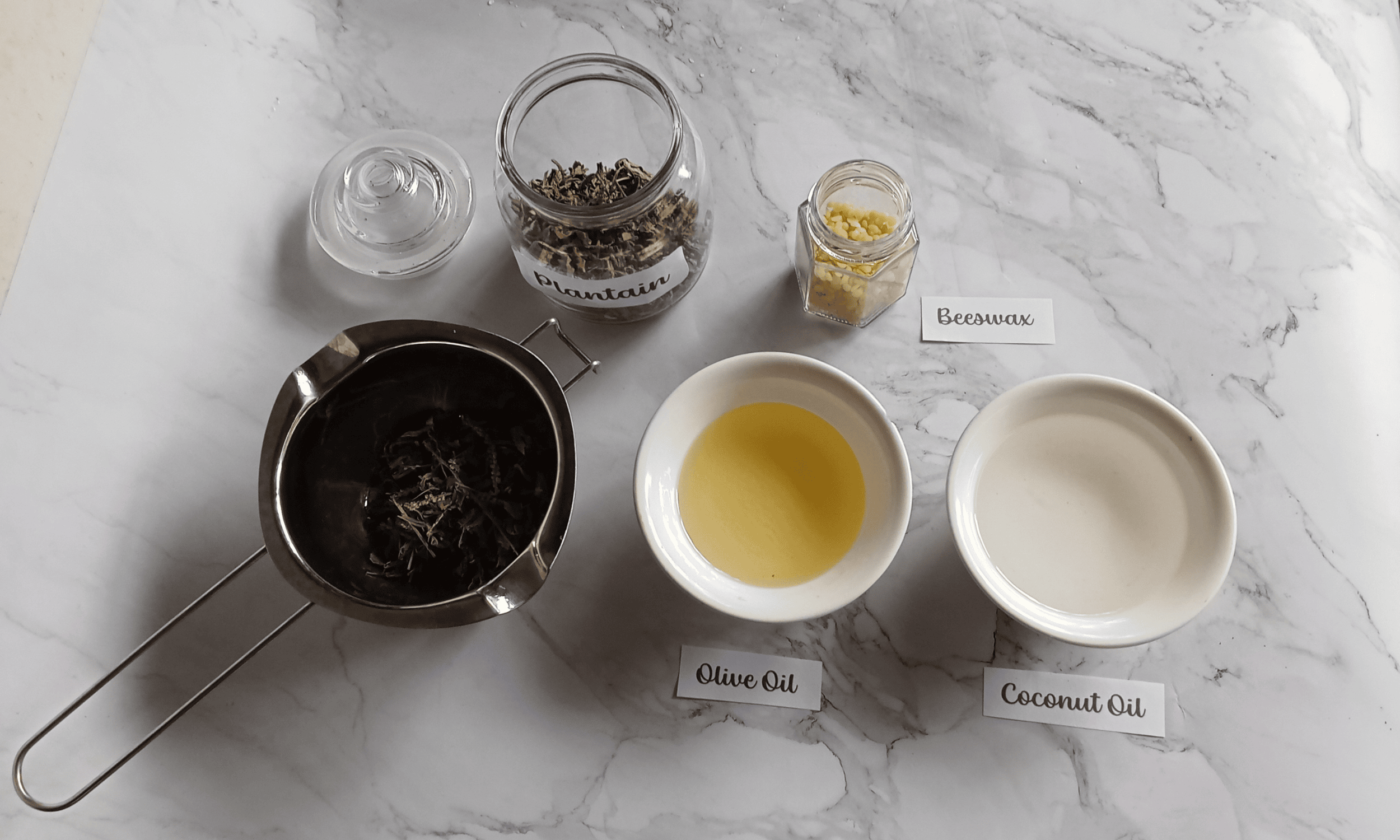
Instructions
- Place plantain leaves in a double boiler or saucepan over hot water and pour olive oil and coconut oil over them.
- Turn the flame to the lowest setting and let it infuse for at least 30 to 60 minutes, without letting the oil boil.
- After infusing, allow the plantain oil to cool before straining it into a container.
- Take ½ cup of the plantain infusion and place it back into the double boiler.
- Add the beeswax, and heat until it melts.
- Pour the plantain salve into a container and let it cool before sealing.
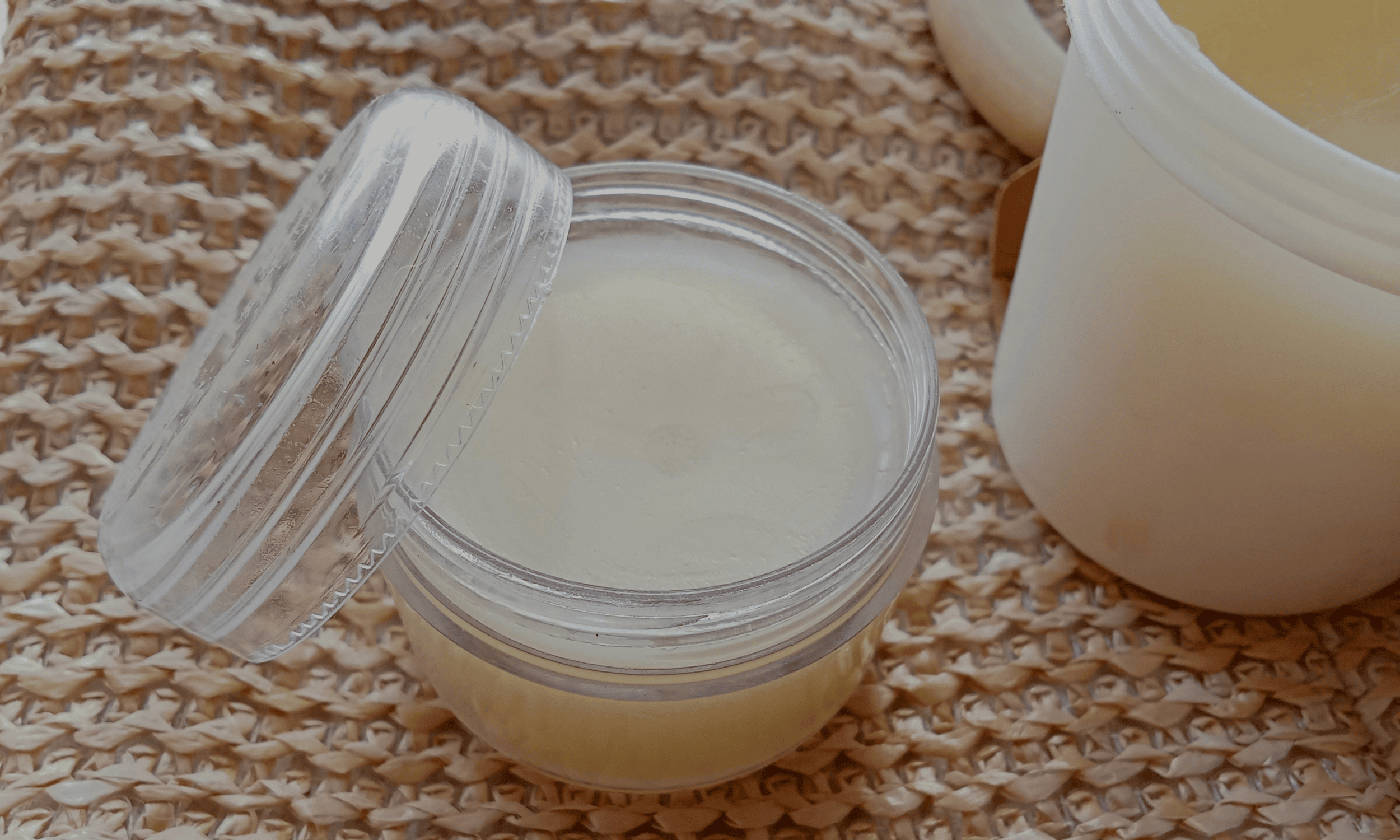
To use: Clean the insect bite with soap and water, then dry it completely before applying the plantain salve. Apply liberally 2 to 3 times a day until the itching and swelling subside.
The Easy Solution: Why Settle for Basic When You Can Have Professional-Grade?
The simple plantain salve you just learned to make is a solid start – but it’s just scratching the surface of what’s possible. While your homemade version uses basic plantain and oils, what if you could get a salve that’s been supercharged with multiple healing powerhouses?
This All-Purpose First Aid Salve goes far beyond your simple recipe. Instead of just plantain, you’re getting organic yarrow for rapid wound healing, wildcrafted calendula for skin repair, arnica for bruising and swelling, and balm of Gilead for deep inflammation relief. Each herb is wild-harvested at peak potency or organically grown without chemicals.
Here’s the reality: sourcing all these premium organic ingredients would cost you more than this ready-made salve. Plus, you’d need to master multiple infusion techniques and perfect the ratios through trial and error. Why spend weeks experimenting when you can have professional-strength results today?
Your basic plantain salve handles simple cuts and bites. This multi-herb formula tackles everything from stubborn rashes and chapped skin to deep bruises and infected wounds – all in one potent 2-ounce tin.
[Upgrade to the professional healing salve here]
Why settle for basic when you can have the complete solution?






